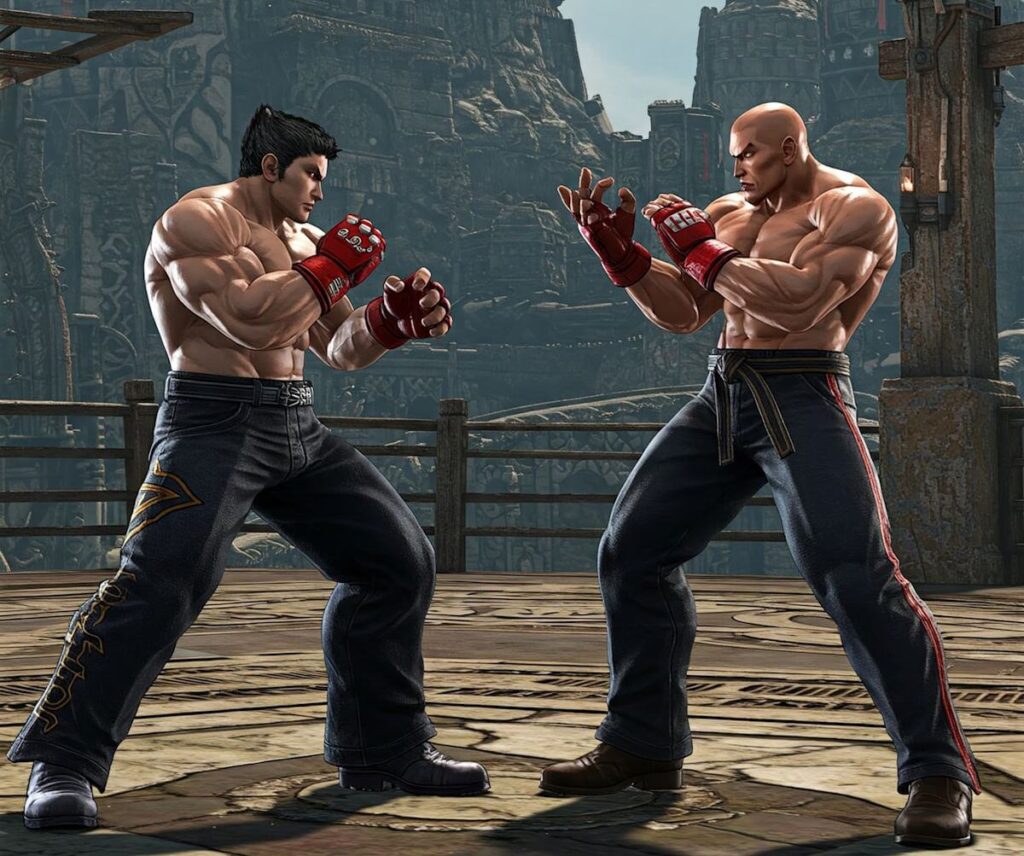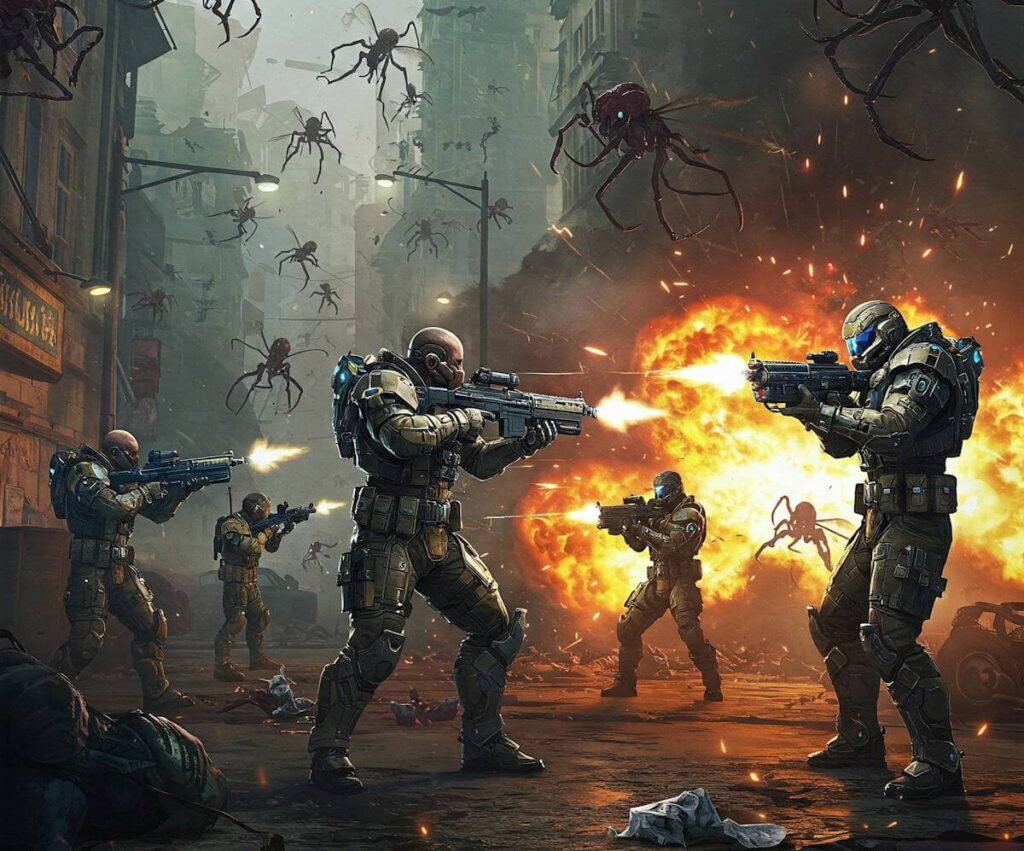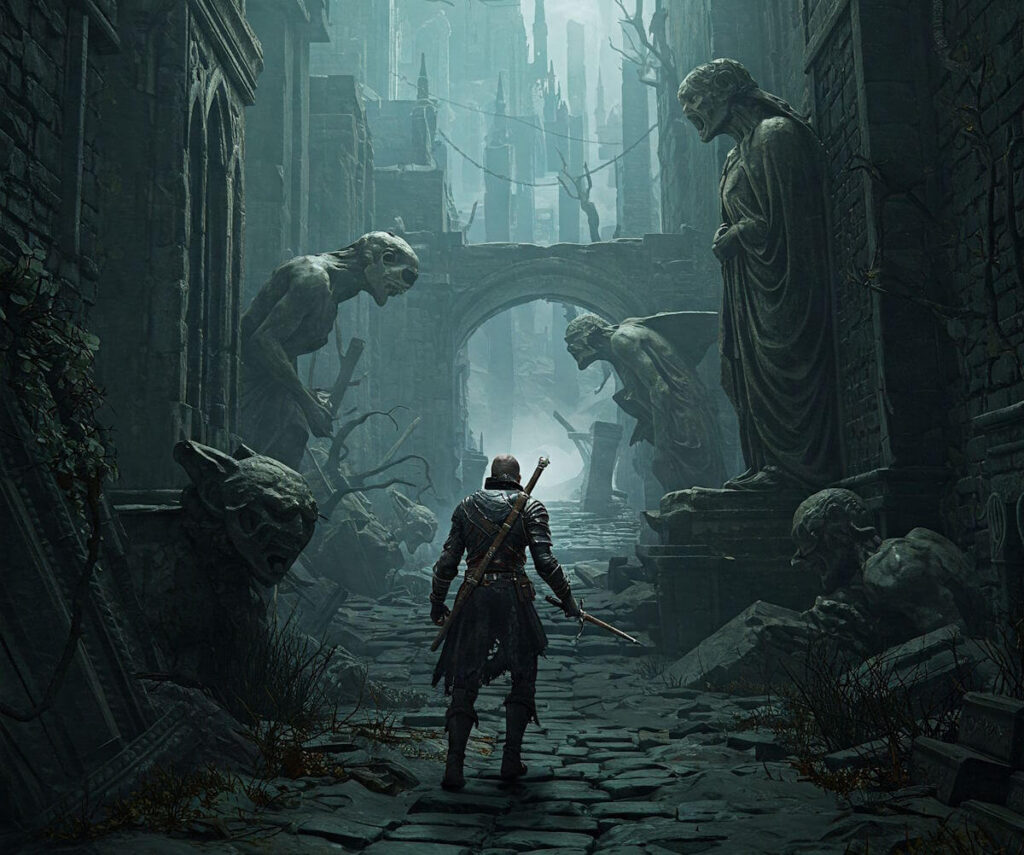Introduction to the Fighting Game Titans
The world of fighting games is enriched by the esteemed legacies of two iconic franchises: Tekken and Street Fighter. Each series has consistently shaped the landscape of competitive gaming, contributing to an ever-evolving community of players and enthusiasts. The announcement of Tekken 8 and Street Fighter 6 has intensified discussions among fans, as both franchises prepare to unveil their latest offerings in a highly competitive market.
Founded in the mid-1990s, Tekken quickly distinguished itself with its 3D gameplay mechanics and a diverse roster of characters, each with unique fighting styles influenced by real martial arts. It captivated players with its intricate move sets and cinematic storytelling. Over the years, Tekken has matured through numerous iterations, constantly adapting to the shifting preferences of its audience while maintaining the core elements that define its identity. The anticipation for Tekken 8 highlights this commitment, as it promises to push the series further into the realms of innovation and engagement.
On the other hand, Street Fighter has a storied history that dates back to 1987, heralding the dawn of competitive fighting games. Street Fighter II revolutionized the gaming industry, introducing mechanics like combo attacks and character selection that are now foundational in the genre. The franchise has continued to thrive, embracing new technologies and gameplay dynamics through its sequels and spin-offs. With Street Fighter 6, Capcom aims to recapture the excitement of previous titles while appealing to both veteran players and newcomers, thus maintaining its dominance in the fighting game arena.
The rivalry between Tekken and Street Fighter is not merely about gameplay mechanics but also involves cultural significance. Both franchises have successfully created dedicated fanbases and have become staples in eSports competitions worldwide. As we venture deeper into the nuances of these contenders, it becomes increasingly crucial to appreciate their individual contributions to the fighting game community.
Gameplay Mechanics: A Comparative Analysis
The essence of fighting games lies in their gameplay mechanics, and both Tekken 8 and Street Fighter 6 have made significant strides in this area. Each title offers a distinct combat system that caters to different playstyles and preferences. In Tekken 8, the combat centers around intricate three-dimensional movements, allowing players to sidestep attacks and evade effectively. The game emphasizes strategy combined with a blend of fast-paced action, requiring players to utilize both offense and defense fluidly. Moreover, the introduction of new mechanics, such as the Heat System, enhances the dynamic of encounters, encouraging players to engage aggressively while managing their resources.
In contrast, Street Fighter 6 leans towards a two-dimensional fighting style, creating a stark difference in how players navigate the battlefield. This title incorporates an enhanced focus on character mobility, with mechanics such as the Drive System that allows players to perform special moves, counters, and command grabs more intuitively. Street Fighter 6 also presents unique combo opportunities, encouraging creativity in player strategies. The game’s control schemes differ, with the addition of simplified input methods aiming to lower the barrier of entry for newcomers, which may alter the competitive landscape and broaden its audience.
While comparison of their core mechanics reveals undercurrents of similarity in the pursuit of delivering a compelling fighting experience, the nuances introduce varied approaches for players. For instance, both games feature extensive combo systems designed to reward skillful execution. However, Tekken’s emphasis on juggling opponents contrasts sharply with the throw-heavy dynamics found in Street Fighter. Ultimately, the choice between Tekken 8 and Street Fighter 6 may come down to personal preference regarding gameplay mechanics, as both titles promise a rich competitive landscape that caters to a broad spectrum of fighting game enthusiasts.
Graphics and Visual Design: A Showdown
The graphics and visual design of a fighting game are crucial elements that can significantly influence a player’s overall experience and immersion. When comparing Tekken 8 and Street Fighter 6, it is essential to assess various factors, including character models, stage designs, animation quality, and the overall artistic direction that each title employs.
Starting with character models, both games exhibit impressive attention to detail. Tekken 8 has taken the series’ iconic characters and enhanced their visual fidelity, with highly detailed textures, realistic facial expressions, and fluid animations. Each fighter is designed to reflect their unique traits, enhancing player recognition and connection. Conversely, Street Fighter 6 utilizes a more stylized approach, opting for vibrant colors and exaggerated features that align with the franchise’s long-standing artistic identity. The characters embody a sense of dynamism, which aligns with the arcade roots of the series, while still showcasing impressive design nuances.
The stage designs in both games further contribute to their respective atmospheres. Tekken 8 often utilizes meticulously crafted environments that reflect real-world locations infused with a sense of realism. These stages actively interact with the combat, featuring destructible elements that can influence gameplay. On the other hand, Street Fighter 6 offers diverse and imaginative stages, drawing players into a world that feels both fantastical and familiar, with each arena designed around the character’s backgrounds.
Animation quality also plays a vital role in visual appeal. Tekken 8’s character movements are fluid and realistic, allowing for seamless transitions between attacks and combos. This attention to detail in animations enhances the immersion considerably. Street Fighter 6, while perhaps less realistic, offers a vibrant and frenetic visual style, with impactful animations that emphasize the game’s fast-paced nature.
In summary, the graphics and visual design in both Tekken 8 and Street Fighter 6 reflect their unique artistic directions and enhance player immersion. While each title has distinct visual strengths, they both showcase the evolution of fighting games, appealing to different audiences through their respective styles and commitments to high-quality presentation.
Character Roster: Who Packs the Better Punch?
When comparing the character rosters of Tekken 8 and Street Fighter 6, it becomes crucial to analyze the variety, uniqueness, and overall balance that each game offers. Both franchises have long-standing legacies, and the characters they introduce greatly influence the gameplay experience. Tekken 8, known for its rich roster, continues to build upon its impressive legacy by featuring numerous returning favorites such as Jin Kazama and Kazuya Mishima, while also introducing fresh fighters that diversify the gameplay notably.
In contrast, Street Fighter 6 emphasizes a similar approach by bringing back well-loved characters like Ryu and Chun-Li, alongside new additions that enhance the game’s depth. The integration of new character designs and fighting styles in Street Fighter 6 shows a commitment to innovation, appealing to both veteran players and newcomers. Additionally, the introduction of mechanics tailored to newer characters allows for varied playstyles, making matches more engaging.
When examining character uniqueness, both games have their distinct approaches. Tekken 8 maintains its focus on a 3D fighting space, where characters possess diverse martial arts styles, facilitating fluid movement and complex combos. The range of abilities across Tekken’s cast emphasizes strategy and skill, enabling players to discover intricate combinations. On the other hand, Street Fighter 6 remains firmly rooted in a 2D fighting environment, offering unique movesets that cater to different gaming strategies, but the skill curve might feel steeper for some players due to its input complexities.
In terms of balance, both titles have seemingly made strides in ensuring that no single character dominates the landscape. This balance is vital, as it encourages a competitive spirit and ensures that player skill remains the driving force behind victory. Ultimately, the character rosters play a significant role in shaping the gaming experiences of Tekken 8 and Street Fighter 6, making it imperative for players to consider their unique attributes and contributions to gameplay when choosing their preferred fighter.
Story Mode and Lore: Engaging with the Narrative
In the realm of fighting games, storytelling is often an underappreciated aspect that significantly enhances player engagement. Both Tekken 8 and Street Fighter 6 have devoted considerable attention to developing immersive narratives, rich character backstories, and intricate lore that captivate players beyond the fight mechanics. Exploring the story modes of these two franchises unveils their unique approaches to narrative construction and character development.
In Tekken 8, the story continues to revolve around the longstanding family feud between the Mishima clan, primarily focusing on the conflict between Kazuya Mishima and his son, Jin Kazama. The game’s cinematic cutscenes seamlessly weave together character arcs and motivations, providing context to their rivalry. This installment introduces various new characters who come equipped with their own backstories, adding layers to the existing narrative. Players can engage with a mix of personal drama, as well as high-stakes family conflict, making the story mode integral to the overall gameplay experience.
Conversely, Street Fighter 6 adopts a different narrative strategy by emphasizing a more globally diverse set of characters, each with unique origins and ambitions. The game offers players the opportunity to explore various storylines, often influenced by real-world themes. The character backstories are rich and woven into the expansive lore, highlighting motivations that reflect personal growth and global challenges. This approach not only entertains players but also provokes thought, as players witness the struggles and triumphs of different fighters from varying cultures.
Ultimately, both games utilize their story modes to enrich the player’s experience, enhancing the emotional investment players feel towards the characters and their journeys. Engaging narratives in Tekken 8 and Street Fighter 6 serve as essential elements, drawing players deeper into their immersive worlds and encouraging ongoing engagement with the franchise’s rich lore.
Online Features and Multiplayer Experience
In the realm of competitive fighting games, the online features and multiplayer experience play a crucial role in determining player engagement and satisfaction. Both Tekken 8 and Street Fighter 6 have made strides in enhancing these aspects, providing players with various options for online interaction and competition.
Tekken 8 has been designed with a robust matchmaking system, which is integral to its online infrastructure. This system aims to create balanced matches by considering players’ skill levels and connecting them with opponents of similar capabilities. The game’s netcode quality is noteworthy, utilizing rollback netcode, which facilitates smoother and more responsive gameplay, even over long distances. This is particularly important in a fast-paced fighting game, where latency can significantly affect performance. Moreover, Tekken 8 encourages community engagement through regular tournaments and online events, fostering a vibrant competitive scene.
On the other hand, Street Fighter 6 emphasizes accessibility and inclusivity within its online features. The game’s matchmaking system also focuses on pairing players based on skill, but it additionally incorporates a casual matchmaking mode, enabling players to engage without the pressure of ranked play. Street Fighter 6 boasts an equally strong netcode, ensuring that players experience minimal lag during matches. To enhance community interaction, Capcom has implemented robust social features, such as customizable avatars and in-game communication options, enabling players to connect beyond mere combat. Furthermore, local co-op play is seamlessly integrated, allowing friends to compete side-by-side, which can be a key draw for many players.
When analyzing the multiplayer experience of Tekken 8 and Street Fighter 6, it becomes apparent that both games strive to offer engaging online environments. Each game approaches community engagement and multiplayer functionality through different lenses, catering to diverse player preferences and enhancing the overall competitive landscape.
Community and Competitive Scene: A Closer Look
Examining the competitive landscapes of Tekken 8 and Street Fighter 6 reveals distinct yet compelling narratives for both fighting game franchises. Each game not only entertains players at home but also fosters a robust ecosystem of competitive events and community engagement. As both titles continue to gain traction in the esports arena, their structures of support and popularity among players contribute to their respective success.
In the realm of tournament support, both Tekken 8 and Street Fighter 6 benefit from well-established international tournaments, showcasing top-tier talent. The Tekken World Tour remains an essential fixture for enthusiasts, offering a structured competitive format that encourages participation through numerous local and regional events. Similarly, Capcom’s Pro Tour provides a pathway for Street Fighter 6 competitors, featuring a series of tournaments culminating in a grand finale. These systems ensure that the best players are highlighted, and newcomers have avenues to enter the competitive scene.
Moreover, community events play a vital role in maintaining player engagement. Tekken 8 has seen grassroots tournaments sprouting up worldwide, reflecting the game’s popularity and building camaraderie within the player base. Street Fighter 6 also thrives in this aspect, with numerous community-hosted events allowing players to connect and compete at a local level. These gatherings not only provide competitive opportunities but also serve to enhance the social fabric of the gaming community.
Popularity within the esports realm further illustrates the successes of both titles. While Tekken 8 may attract a diverse crowd due to its longstanding history and unique mechanics, Street Fighter 6 continues to resonate strongly with players, aided by its evolving gameplay and character roster. The competitive spirit fostered by these games encourages ongoing interaction among players, thus nurturing the community and bolstering the competitive scenes of both franchises, ultimately driving their success in the fighting game genre.
Future of the Franchises: What Lies Ahead?
The future of both Tekken and Street Fighter franchises is poised for significant evolution, particularly with the recent releases of Tekken 8 and Street Fighter 6. With both games setting high benchmarks in terms of gameplay mechanics, graphics, and character design, the developers are likely to continue investing in their longevity through updates and downloadable content (DLC). As seen in the trajectory of previous titles, maintaining player interest will be essential, and both franchises seem well-equipped to adapt and enhance their offerings.
For Tekken 8, the introduction of new characters alongside classic favorites may lead to a plethora of content updates aimed at diversifying gameplay experiences. Developers can capitalize on community feedback to strike a balance between innovation and nostalgia, ensuring that long-time fans remain engaged while attracting new players. Additionally, the implementation of seasonal updates and the potential release of character passes could sustain excitement, similar to the business models adopted by contemporary fighting games.
On the other hand, Street Fighter 6 seems to have focused on player accessibility and competitive balance. Its innovative systems—such as the World Tour mode—suggest that Capcom may further explore both single-player experiences and online competitive play. Increased engagement with the player community through polls and open feedback channels may dictate future character additions and gameplay tweaks. Furthermore, the expansion of cross-platform capabilities could signify a commitment to fostering an inclusive environment for players from various backgrounds.
Ultimately, the promise of ongoing support—be it through new fighters, balance patches, or engaging events—will be pivotal for both franchises as they seek to carve their paths in an increasingly competitive gaming landscape. The response from the player community will likely shape the evolution of each franchise, driving developers to make thoughtful decisions that cater to the evolving desires of their audiences.
Conclusion: The Ultimate Fighter Showdown
Throughout this exploration of Tekken 8 and Street Fighter 6, we have analyzed various aspects that define the two iconic franchises. Both games offer distinct gameplay styles, character rosters, graphics, and community engagement, catering to different tastes within the fighting game community. Tekken 8 showcases a more technical combat system, with an emphasis on intricate mechanics and depth, allowing dedicated players to master a variety of characters. In contrast, Street Fighter 6 leans into accessibility, presenting a user-friendly environment for newcomers while still providing layered strategic options for veterans.
The character designs and narratives in each game also offer unique experiences. Tekken’s expansive and complex storyline, characterized by its interwoven family feuds and rivalries, contrasts with Street Fighter’s more straightforward sagas involving global confrontations. This storytelling aspect can play a vital role in engagement for fans who appreciate narratives alongside their gaming experience.
Graphics and art styles present yet another avenue of differentiation. Tekken 8 utilizes cutting-edge technology to enhance realism, creating immersive environments and fluid animations. Conversely, Street Fighter 6 embraces a more stylized approach, captivating fans with vibrant visuals and a distinct artistic flair that emphasizes its arcade roots.
Ultimately, the decision on which game holds the edge may depend on individual preferences and playstyles. Engaging with both communities reveals a shared passion for the fighting genre. As players continue to experience the strengths of each title, they draw insights that shape personal favorites. Fans are encouraged to weigh these elements thoughtfully. Thus, the ultimate victor in this showdown may not reflect a singular winner but rather the celebration of two remarkable franchises that continue to evolve and captivate audiences around the globe.





